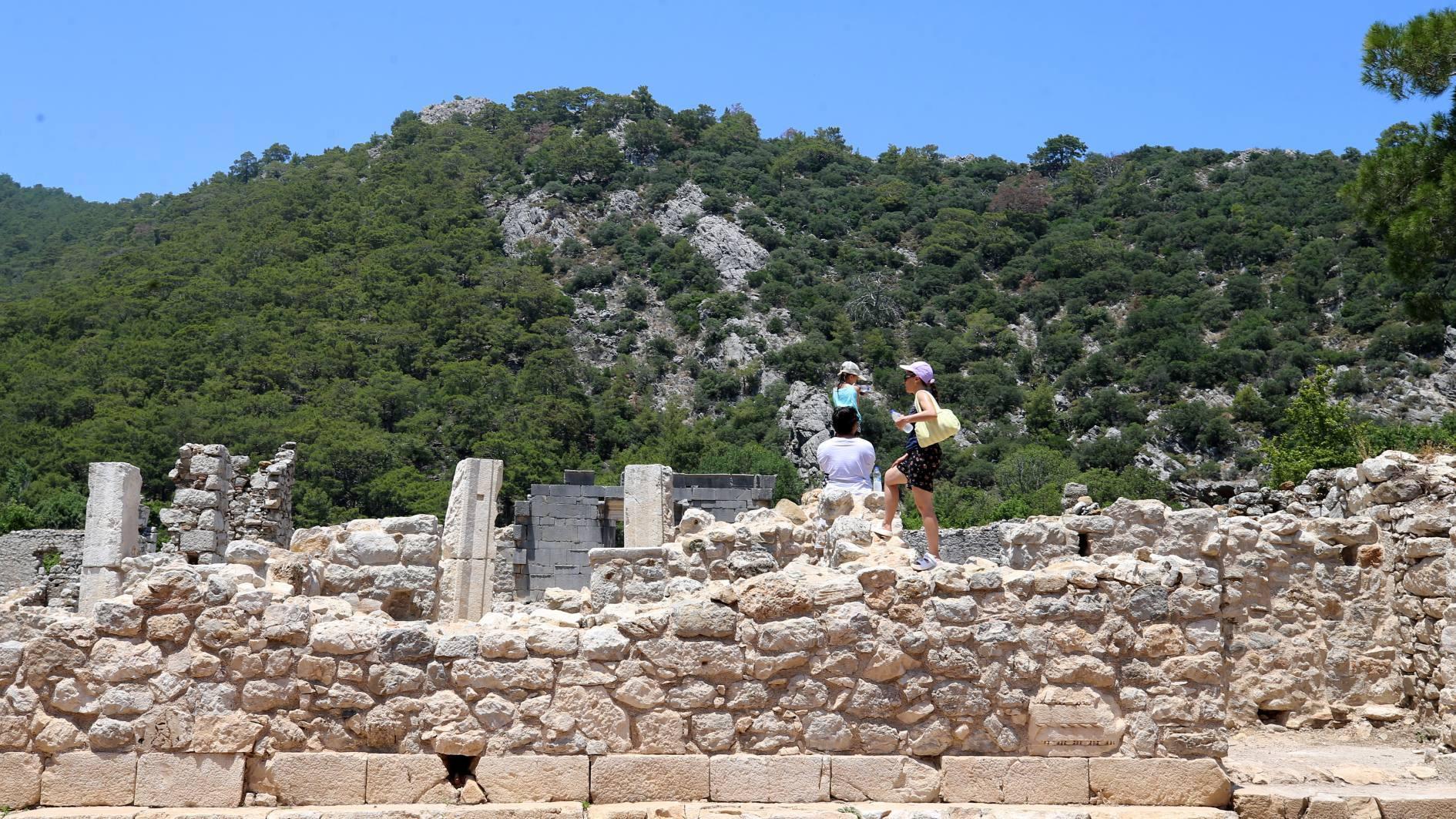
The Roman-era rock tombs that have been unearthed in the ancient city of Olympos, located in the southern province of Antalya's Kumluca district, have been included in the visitor route for the first time this year.
One of the most important settlements of the Lycian civilization, Olympos is notable for its ruins as well as the river that runs through it to the sea.
Known for its rich history, archaeological remains and unique natural setting, the city has been the site of excavations since 2006. Works gained momentum, particularly with the support of the Culture and Tourism Ministry’s “Heritage for the Future” project.
Structures such as Churches No. 1 and 3, the entrance complex, the bishop’s palace, a bridge, monumental tombs, a mosaic structure, a bathhouse, the Antimachos sarcophagus and harbor tombs have previously been identified at the site. The latest phase of excavations has now revealed large funerary structures, including vaulted tomb chambers and sarcophagus-containing tomb rooms.
The tombs, long hidden under dense vegetation and closed to visitors, were uncovered and made accessible this year after comprehensive cleaning and landscaping work. New footpaths have been created to allow visitors to walk through the necropolis and view the ancient structures up close.
Associate Professor Gökçen Kurtuluş Öztaşkın, head of the excavations and a faculty member at Pamukkale University, told state-run Anadolu Agency that uninterrupted excavations are being carried out year-round thanks to the ministry’s increasing financial support.
Last year’s work focused on the southern necropolis of Olympos, Öztaşkın said. “We began our excavations from the western entrance of the city and continued along the axes of the Necropolis and Harbor streets. We worked on Roman-era tombs as well as Early Byzantine residential structures. Simultaneously, we conducted documentation efforts in other parts of the city,” she explained. “Following the excavations, we are also carrying out conservation and restoration work.”
Over 270 Roman-era tombs identified
Öztaşkın said that due to dense pine and laurel trees along the southern slope of the stream bisecting the city, the tombs in that area had previously been inaccessible. “We cleared the vegetation and brought the structures to light. For the first time, the necropolis can now be viewed from the opposite slope, and thanks to newly arranged paths, visitors can reach the area,” she said.
With the addition of these paths, the rock-cut tombs have been officially included in the new walking route. “This year, we cleared several layers of tombs positioned along the slope. These include vaulted tomb rooms and larger chambers housing sarcophagi, extending across roughly 400 meters,” she said.
Öztaşkın noted that the team is also conducting detailed documentation of the Roman-era tombs. “We are working on both the physical documentation and epigraphic analysis of the inscriptions found on the tombs,” she said. “So far, we have identified more than 270 graves in the southern necropolis. These include the tombs of wealthy individuals, slaves and even soldiers who served here during the Roman period. The data we are collecting provides valuable insights into the demographic composition of ancient Olympos."